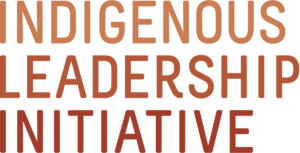New Report Shows Indigenous Guardians Programs Are Good for the Land & People
By Valérie Courtois
Summer is a busy time for Indigenous Guardians. Along the eastern shores of Great Slave Lake, the Ni Hat’ni Dene Guardians are testing water quality in wetlands where tens of thousands of migratory birds are raising their young. In the forests of northern BC, Yunesit’ni land guardians are working on traditional fire management in a region devastated by the record-breaking blaze of 2017. And in Georgian Bay, the Anishinabek Traditional Ecological Guardians are monitoring species at risk and climate impacts within a chain of islands that forms a natural corridor for animals.
The work unfolding across the country paints a clear picture: Indigenous Guardians are helping sustain lands and water we all depend on. And they are addressing some of the biggest environmental challenges of our time, including climate change and declines in animal and plant species.
A new report confirms that having guardians on the ground benefits lands, people and the economy.
“The Case for a Guardian Network Initiative,” released by the University of Victoria Environmental Law Centre and the BC First Nations Energy and Mining Council, offers a comprehensive overview of guardians programs in BC and across the country.
Ni Hat’Ni Dene Guardians Photo: Pat Kane
It finds that Guardian programs deliver proven results for First Nations peoples and non-Indigenous Canadians alike. And it concludes that investing in a national network for guardians programs will spread economic, social and environmental benefits throughout Canada.
Indigenous stewardship works because it honours the relationship between people and the land. It recognizes that caribou herds, boreal lakes, and songbird nesting grounds benefit from respect and care.
Guardians programs are a powerful expression of the cultural responsibility to care for the land. And as the report shows, upholding this responsibility benefits us all.
Here are some of the positive outcomes the report focuses on:
Good for the Land: Drawing on training in Indigenous and western science, Guardians are helping sustain an abundance of animals and plants. The report describes how the Okanagan Nation Alliance successfully brought Sockeye salmon back from the brink of extinction by restoring habitat in south central BC and nursing fish populations to vibrant levels.
Many guardians also help plan and care for large-scale Indigenous Protected and Conserved Areas. The report notes that this stewardship will ensure Canada can meet its commitments to preserve biodiversity, including protecting 25% of lands by 2025.
Good for People: Guardians programs provide training and opportunity rooted in culture. Research shows they increase confidence and pride among guardians and improve health and wellbeing across communities. And they inspire Indigenous youth with a sense of purpose and connection to their elders.
Guardians programs also help strengthen Nationhood. They collect baseline data for Nations’ land use plans and resource decisions. The Skwxwú7mesh stelmexw (Squamish) Nation, for instance, created a process to review the proposed Woodfibre liquefied natural gas facility. Based on its own careful assessment, the Nation allowed the project to proceed with certain conditions.
Good for the Economy: Guardians programs offer good-paying jobs in small communities. Their investments in boats, skidoos, and other monitoring equipment benefit regional suppliers. And they often support Indigenous-led tourism businesses. The report notes the Ahousaht Stewardship Guardian Program runs a tourism operation that issues visitor permits for the Maquinna Marine Park and provides education for tourists.
The report concludes that consistent federal investment will expand these benefits across the country. It will help launch and expand individual guardians programs and build a network to broaden training and research across programs.
In the Indigenous Leadership Initiative’s work to promote and support guardians programs, we’ve seen firsthand the positive results outlined in this research. The report confirms once again the vital role guardians play for their Nations, for the land and for all of us.


